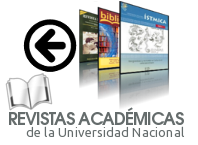Fitna
DOI:
https://doi.org/10.15359/siwo.11-1.2Abstract
In order to articulate the Qurʾānic concept of fitna I divided this article into three parts. In the first part, I discuss the etymology, meanings, and use of fitna in the Qurʾān. I argue that though fitna indicates deception, seduction, anarchy and turmoil, it is considered normative; it is the nature of this world. The essence of fitna is a merging of truth and falsehood that renders signs seductive and removes truth from the field of reason. Meaning is neither true nor false, absent nor present; it is incomplete since it partially operates within the sphere of ghayb, or the invisible reality. In the second part, I explore fitna as a sociological analytical concept by situating it within Western sociological theory. I contrast fitna to related concepts in the works of Sigmund Freud, Georges Bataille, Jean Baudrillard and Timothy Bewes. Exploring the work of Ibn Taymiyya (1263–1328 CE) in his treatise on truth and metaphor, and comparing it to the work of Bernard McGinn, I argue that in articulating meaning and truth, fitna avoids both dialectic synthesis and cosmic dualism by proposing a partial overlap between ẓāhir and ghayb, or the visible and the invisible worlds. In the third part, I study two applied aspects of fitna: in legal reasoning, and the theology of apocalypse. I explain how a worldview of fitna featured a formal notion of truth that is legal, rather than ontic and objective, and is grounded in ghālib al-ẓann, or the predominant probability. I then connect the apocalyptic turmoil to an increasing overlap between ghayb and ẓāhir, which escalates to their identification, but this comes with the end of fitna and the end of this world.
Published
How to Cite
Issue
Section
License
Política propuesta para Revistas que ofrecen Acceso Abierto
Los autores que publican en esta revista están de acuerdo con los siguientes términos:
1. Esta revista provee acceso libre bajo licencia Creative Commons Reconocimiento-NoComercial CC BY - NC. Usted como persona autora conserva sus derechos de autor. Esta licencia permite que otros remezclen, adapten y desarrollen su trabajo sin fines comerciales, siempre y cuando le den crédito y licencien sus nuevas creaciones bajo los mismos términos
2. Los autores pueden establecer por separado acuerdos adicionales para la distribución no exclusiva de la versión de la obra publicada en la revista (por ejemplo, situarlo en un repositorio institucional o publicarlo en un libro), con un reconocimiento de su publicación inicial en esta revista.
3. Se permite y se anima a los autores a difundir sus trabajos electrónicamente (por ejemplo, en repositorios institucionales o en su propio sitio web) antes y durante el proceso de envío, ya que puede dar lugar a intercambios productivos, así como a una citación más temprana y mayor de los trabajos publicados (Véase The Effect of Open Access) (en inglés).











